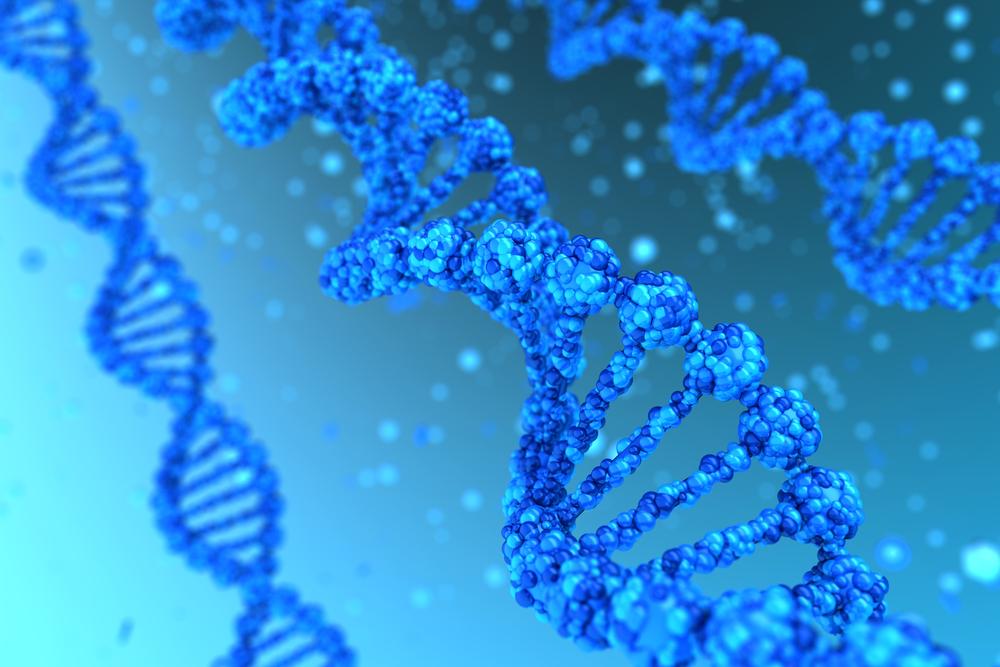Researchers Identify 5 New Mutations Linked to Form of Batten Disease

Researchers have identified five new mutations in the CLN8 gene — the genetic factor behind CLN8 disease, one of a group of conditions known as NCLs, collectively called Batten disease.
The study, “CLN8 disease caused by large genomic deletions,” was published in the journal Molecular Genetics & Genomic Medicine.
Neuronal ceroid lipofuscinoses (NCLs) are the most common group of pediatric neurodegenerative disorders, characterized by progressive intellectual and motor deterioration, seizures, and early death.
More than 400 mutations in 14 different genes (CLN1 to CLN14) have been identified as disease-causing mutations.
Batten disease is most commonly inherited in an autosomal recessive manner, which means that a child has to inherit two defective copies of a gene (one from each parent) for symptoms to develop. However, in some cases, a child with only one mutated copy of a gene still develops the disease — called an autosomal dominant pattern.
CLN8 disease is known to be caused by mutations in the CLN8 gene. So far, over 30 CLN8 disease-causing mutations have been reported, including those leading to an alteration of an amino acid — the basic unit of proteins — to a shorter protein, and to the partial or full deletion of the CLN8 gene.
Researchers previously found a correlation between the type of CLN8 mutation and disease severity. Patients who carry mutations that result in the loss of function of the gene generally have earlier disease onset and more rapid progression than those with variants that only reduce the expression or function of the gene.
The less-severe form of CLN8 disease usually starts between 5 and 10 years of age, and while patients have seizures and impaired cognitive function, balance, and coordination, they often live until late adulthood.
The more-severe form of the disease usually begins between ages 2 and 7, and is characterized by a faster disease progression, often with loss of speech and vision, with patients usually surviving only into late childhood or adolescence.
Researchers have now identified five new mutations in the CLN8 gene in three unrelated children with the more-severe form of CLN8 disease.
A 5-year-old Argentinian girl with a history of CLN8 disease in her family began to experience involuntary twitching, seizures, lack of coordination, and sudden spontaneous falls.
Clinical tests showed the girl had impaired vision and brain atrophy, confirming a diagnosis of NCL. Genetic tests revealed a large DNA deletion that included the CLN8 gene, among others, in both the maternal and paternal copies of her DNA.
A second girl, from a British family, had a normal development until age 4, at which time she began to show increasing motor difficulties. From then on, the disease worsened rapidly and led to the patient’s death at the age of 9.
A genetic analysis identified two different mutations, one from each parent. A small DNA deletion containing the CLN8 gene was inherited from her father, and a specific mutation (p.Leu243Pro) leading to an amino-acid swap was inherited from her mother.
Amino acids are the building blocks of proteins, and this particular alteration is thought to cause a severe change in the protein generated by the CLN8 gene.
A third patient, a British boy, had progressive vision impairment starting at age 3, and seizures from age 4. From that point on, a rapid decline in motor function was observed.
Genetic tests revealed the boy had one large deletion containing the CLN8 gene — which was inherited from his mother — and a mutation (p.Gln255*) that resulted in a shorter unfinished protein, inherited form his father.
Overall, these results support the increased diversity observed in CLN8 disease-causing mutations.
As such, the authors recommend that specific genetic analysis be performed in “any patient suspected of NCL who is apparently homozygous for a mutation that is not present in one of the parents or when the family has no known consanguinity.”





